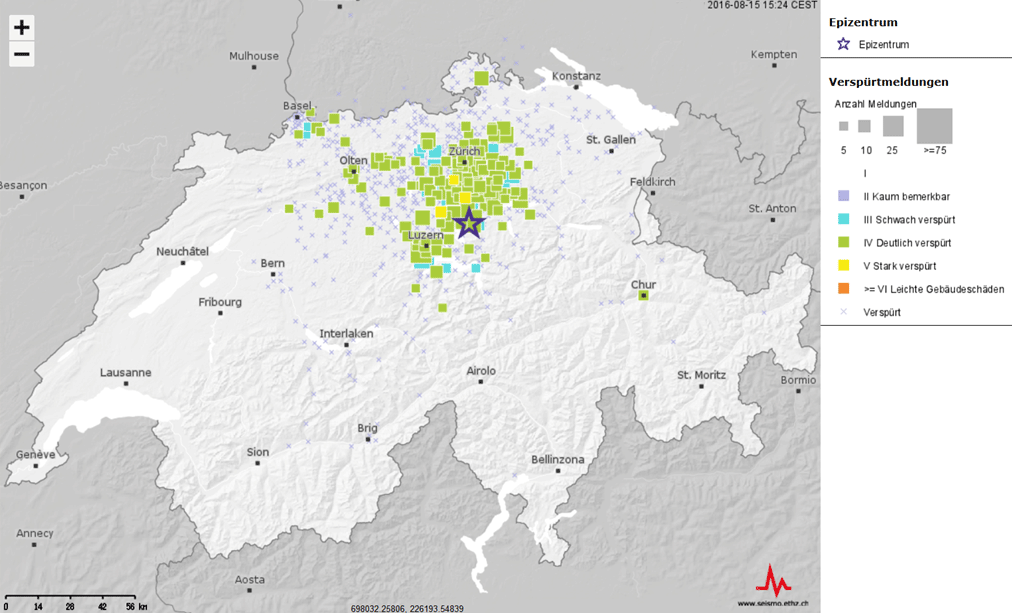Use of the Survey
Besides seismic-wave data recorded on various instruments, reports and descriptions of earthquakes from people living where they occur are the most important source of information on earth tremors in Switzerland. Information from the public on earthquakes strong enough to be felt by the local population is valuable on account of its sheer depth of detail as to a quake’s impact. However, the knowledge that a specific earthquake was not strong enough to be felt is just as valuable.
Felt Reports

Until the invention of the seismograph, so-called macroseismic analyses – analyses based primarily on observations submitted by the public and on data from field studies – were the only systematic way in which to document earthquakes. However, information on what people feel or do not feel when an earthquake occurs is still of scientific value. Such reports can be used to estimate macroseismic intensity, a measurement of the surface impact of an earthquake in a particular village, town or district. The accuracy of any macroseismic analysis and the resulting estimation of an earthquake's intensity hinges first and foremost on the quality of the observations submitted: reports should detail any damage caused to buildings and objects, and provide a subjective description of an individual’s experience and its consequences.
By collecting and analysing (via a partially automated process) observations submitted to the Swiss Seismological Service (SED) by members of the public filling out an online form or responding to a printed questionnaire, it is possible to:
- produce a swift assessment of the effects of and scale of damage caused by an earthquake;
- calibrate earthquakes parameters of historical quakes based on macroseismic analysis;
- characterise and document, from a macroseismic standpoint, any earthquakes that occur;
- determine site-specific effects to support seismic microzonation;
- bases for calibrating earthquake scenarios.
Population details are displayed on macroseismic maps. For each felt earthquake, a corresponding map is published on the SED website (see details of each quake).
Macroseismic intensity is a classification of the severity of ground shaking, based on observed effects within a limited area. Information on observations during an earthquake can be broken down into five categories – information on human beings, on objects, on buildings, on animals and on the natural environment – and these categories are numerically scaled. Several different systems are used worldwide: at present, the SED and many other similar organisations in Europe use the European macroseismic scale or EMS-98, so-called because it was introduced in 1998 (see Grünthal G., ed. 1998). An intensity scale provides a general indication of the impact of an earthquake, from the very weakest (with an intensity of I on the EMS-98 scale: 'Not felt') to the very strongest (with an EMS-98 intensity of X or more and classed as extreme). Each locality is assigned a single intensity. The resulting intensity map gives a comprehensive overview of the earthquake-impact pattern.
In principle, the subjective criteria used by the respective analyst also be factored in when assigning a site its intensity value. Consequently, it is important to document the evaluation procedure, declare any scope for interpretation and state any uncertainties. Accordingly, in practice the SED assigns each locality a range between a minimum (Imin) and maximum (Imax) value as well as a value with the highest probability (Iw), which serves as the basis for catalogue entries and maps.